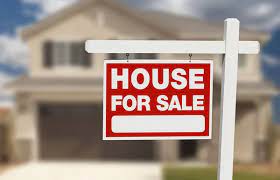Australia’s housing market now split into 2 distinct markets
House price momentum across Australia’s capital cities has diverged, with some cities facing significant slowdowns, while others maintain strong growth.
Recent data from Ray White’s chief economist, Nerida Conisbee, has revealed that Australia’s housing market has split into two segments as 2024 comes to a close. These two distinct markets are a matter of speed: while both are slowing to some extent, one cohort has abruptly hit the breaks, while the other is in a much more gradual rate of change. Driven by local economic conditions, population trends and housing supply, Conisbee believes the divide is likely to persist into 2025.
Sydney, Canberra, Melbourne and Hobart are at the forefront of the market slowdown. These cities have recorded an average growth of 2.9 per cent over the past year – well below the peak of 6.7 per cent growth in the year to February 2024.
Sydney’s market has been hit hardest by rising interest rates, particularly at the premium end of the market. Conisbee stated that while affordable segments in the NSW capital are showing modest resilience, the luxury market has softened significantly and that recovery hinges on anticipated interest rate cuts in early 2025.
Canberra’s housing market is also affected by interest rates yet the cooling of the market is shaped by a different factor – higher than average housing supply. Unlike other cities struggling with shortages, the ACT government’s housing strategy focuses on affordability through high levels of housing supply.
Melbourne faces a more complex set of challenges hindering the market, with a weakened Victorian economy, Australia’s highest property taxes and sensitivity to interest rate hikes. Conisbee noted that while strong migration offers some support, the broader economic downturn is limiting its recovery prospects.
Meanwhile, Hobart is struggling with a demographic hurdle amid its weak population growth, fuelled by declining interstate migration, which is undermining demand. Consibee stated that while lower interest rates would help, the state’s long-term population issues remain a significant challenge.
Contrastingly, Perth, Adelaide and Brisbane continue to show strong momentum, with annual price growth at 13.2 per cent. Although this is a sharp distinction from 18.9 per cent in the last 12 months leading up to May 2024, these cities remain among the country’s top performers.
South-east Queensland, covering Brisbane and extending from northern NSW to the Sunshine Coast, remains a hotspot. South-east Queensland’s robust migration, strong demand and tight supply are pushing prices higher across all segments, solidifying the region’s market strength.
Perth’s market also remains strong, with house prices and rents continuing to climb. While some of this increase can be underpinned by catch-up growth, population growth and rising construction costs continue to limit supply. Conisbee emphasised that the recent softening in key commodity markets, including iron ore and lithium, may be starting to slightly dampen momentum with the rate of change returning marginally.
Adelaide’s housing market continues to benefit from strong state government leadership, mining sector growth and a competitive median house price which is roughly half of Sydney’s. Conisbee stated that affordability is attracting both interstate migrants and investors, further driving those who are seeking value.
As Australia heads into 2025, the divide in market performance is expected to remain, with local economic conditions, population trends and housing supply playing a crucial role in determining each city’s path. Cities such as Sydney and Melbourne may require economic recovery and reduced interest rates to regain stability, while Brisbane, Perth and Adelaide are likely to continue capitalising on local strengths.

